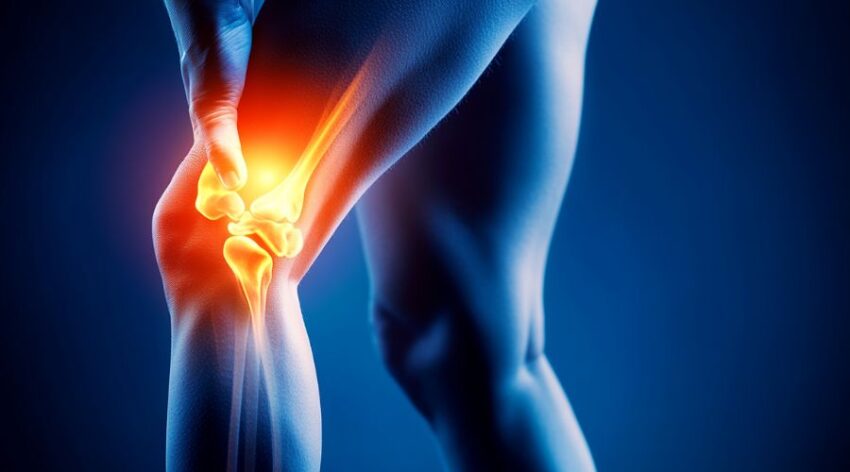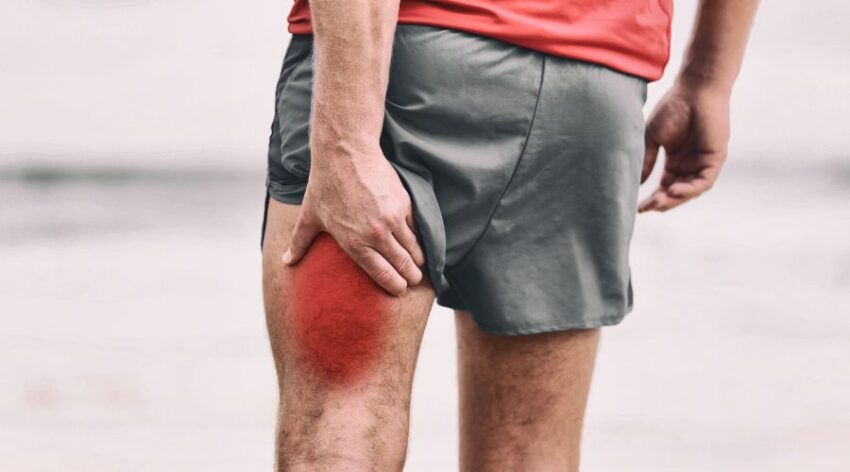Tight hamstrings can be a major contributing factor to knee pain, affecting mobility, flexibility, and overall joint health. When the hamstring muscles become overly tight, they create imbalances that put additional stress on the knee joint, leading to discomfort and even injury. If you are struggling with pain, Innovative Healthcare Centers are here to help!

The Anatomy of the Knee and Hamstrings
To fully comprehend how tight hamstrings contribute to knee pain, it is important to understand the anatomy of the knee and hamstring muscles. The hamstrings are a group of three muscles located at the back of the thigh: the biceps femoris, semitendinosus, and semimembranosus. These muscles originate at the pelvis and extend down to the tibia and fibula, crossing both the hip and knee joints.
The knee joint is a hinge joint that connects the femur (thigh bone) to the tibia (shin bone) and is supported by ligaments, tendons, and cartilage. The patella, or kneecap, sits in front of the knee and aids in joint stability. The hamstrings play a crucial role in knee movement, assisting in knee flexion and controlling knee extension. When these muscles become tight, they can restrict movement and place excess stress on the knee joint.
How Tight Hamstrings Contribute to Knee Pain
Tight hamstrings can impact knee function in several ways:
- Increased Joint Compression – When hamstrings are tight, they exert a pulling force on the knee joint, increasing compression and reducing shock absorption. This can lead to pain, especially during activities like walking, running, or squatting.
- Altered Knee Mechanics – Tight hamstrings can affect the alignment of the knee, leading to improper tracking of the patella. This misalignment can cause pain in the front of the knee, known as patellofemoral pain syndrome.
- Limited Range of Motion – Hamstring tightness can restrict knee extension, making it difficult to fully straighten the leg. Over time, this limitation can contribute to stiffness and discomfort in the knee joint.
- Increased Risk of Injury – When the hamstrings are too tight, they are more prone to strains and tears. Additionally, they can cause compensatory movement patterns that lead to knee injuries such as ligament sprains or meniscus tears.
Symptoms of Knee Pain Related to Tight Hamstrings
Knee pain caused by tight hamstrings may present with various symptoms, including:
- Stiffness in the back of the thigh
- Pain or discomfort around the kneecap, especially during movement
- A sensation of tightness or pulling in the knee when trying to straighten the leg
- Reduced flexibility in the hamstrings
- Weakness in the muscles surrounding the knee
If left untreated, tight hamstrings can contribute to chronic knee pain and limit mobility.


Prevention of Knee Pain from Tight Hamstrings
Preventing knee pain associated with tight hamstrings involves a combination of stretching, strengthening, and proper movement techniques. Here are some effective strategies:
- Regular Stretching – Stretching the hamstrings daily can improve flexibility and reduce tension on the knee. Effective stretches include:
- Standing hamstring stretch
- Seated forward bend
- Lying hamstring stretch using a resistance band
- Strengthening Exercises – Strengthening the quadriceps, glutes, and core muscles can help balance the forces acting on the knee joint and reduce the strain caused by tight hamstrings.
- Proper Warm-up and Cool-down – Before engaging in physical activities, it’s important to warm up the muscles to enhance elasticity. Cooling down with gentle stretching after exercise can also prevent stiffness.
- Foam Rolling and Massage – Self-myofascial release techniques, such as foam rolling, can help alleviate tightness in the hamstrings and improve blood flow to the muscles.
- Postural Awareness – Maintaining proper posture when sitting and standing can prevent excessive strain on the hamstrings and knee joint.
Frequently Asked Questions
Can Knee Pain Cause Hip Pain?
Yes, knee pain can contribute to hip pain. Since the body operates as an interconnected system, issues in one joint can impact others. When knee pain alters movement patterns, it can place additional strain on the hip joint, leading to discomfort and dysfunction.
Can Sciatica Cause Knee Pain?
Yes, sciatica can cause knee pain. Sciatica occurs when the sciatic nerve, which runs from the lower back through the hips and buttocks down to the legs, becomes compressed or irritated. This condition often causes pain, numbness, or tingling along the nerve’s path, which can extend to the knee.
Why Do I Have Pain When Straightening My Knee?
Pain when straightening the knee is a common complaint that can affect individuals of all ages. It can arise from various causes, including acute injuries, chronic conditions, or overuse.


Get Started Today
If you are experiencing knee pain due to tight hamstrings, addressing the issue early can prevent further complications. At Innovative Healthcare Centers, our expert team specializes in diagnosing and treating musculoskeletal conditions through personalized, non-surgical treatments. Whether you need physical therapy, advanced pain management techniques, or rehabilitation plans tailored to your needs, we are here to help you regain pain-free movement.
Contact us today to schedule a consultation and take the first step toward better knee health!